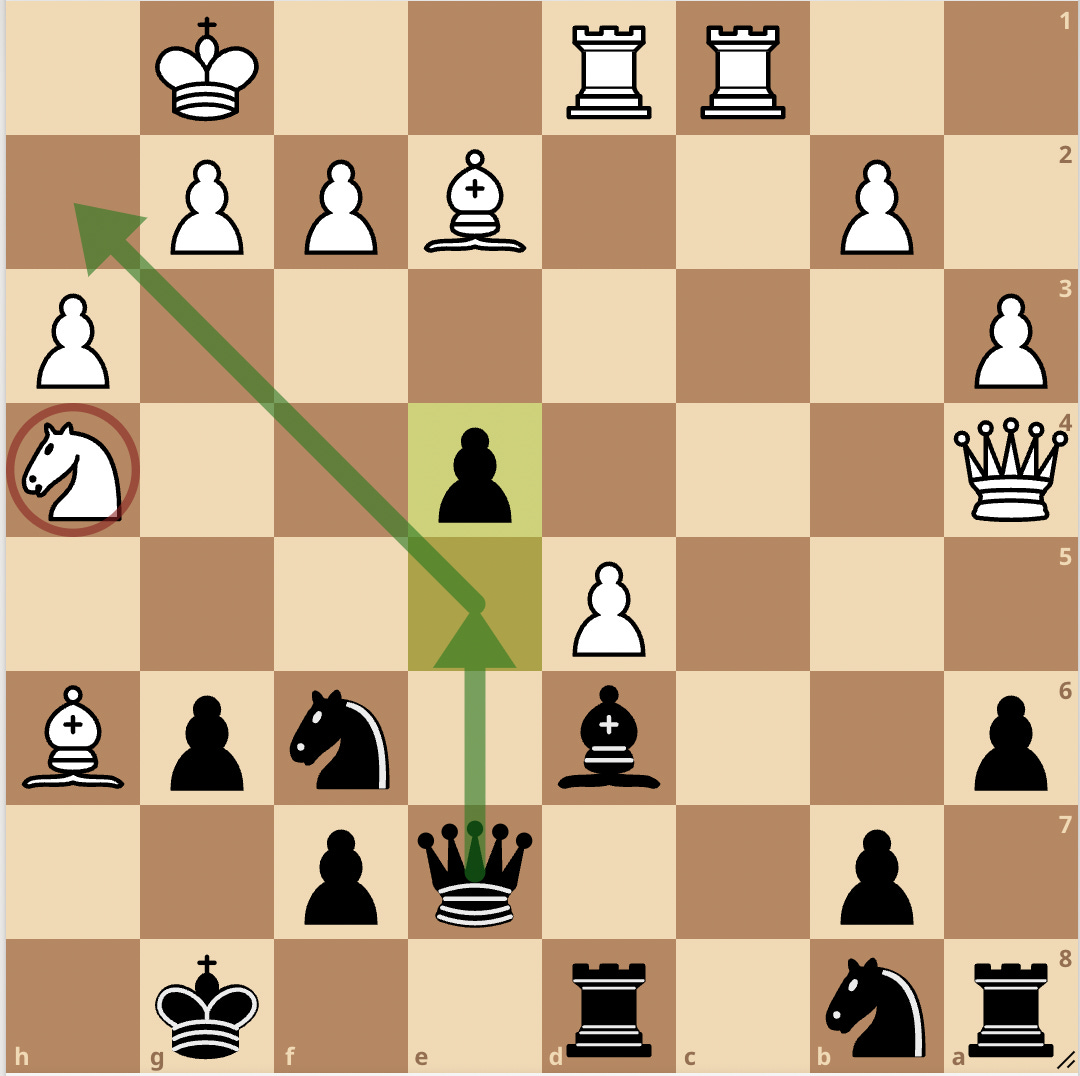Everyone gets bad positions, but what really sucks is when you lose without a fight, without making your opponent work for it. How do you avoid those games?
In The Road To Chess Improvement, former US champion Alex Yermolinsky covers an important but often overlooked skill: recognizing and changing trends in the game. He calls these techniques trend-breaking tools. One of the most important ideas to keep in mind when the game is not going your way is to change the nature of the position. This may not change the objective evaluation, but by giving your opponent a new problem to deal with, it can provoke a mistake that will get you back in the game.
In this position from a rapid training game, my opponent had just played the natural developing move 0-0-0, but got hit with Ng5. Suddenly it’s very hard to defend the pawn on f7. How would you react?
There are three main candidates.
A) 10... Ne5 This doesn’t work because the knight is unstable in the middle of the board. 11. h3 Bd7 12. Bd4 and Black loses material.
B) 10... Be6 This is the only way to “save” the pawn, but it allows White to grab the bishop pair and wreck Black’s pawn structure. 11. Nxe6 fxe6 12. Bc4
How would you rate your chances in this position? This is the crux of the decision. While material is technically even for the moment, the e6-pawn is doomed and Black has no prospects whatsoever for counterplay. I would judge that I have very little chance of saving this position against a strong opponent. Which brings us to…
C) 10... Bh6 Giving up the pawn to wreck White’s pawn structure and activate the pieces. Now one possible line would be 11. Nxf7 Bxe3 12. fxe3 Rhf8 13. Nxd8 Rf2+
This is a much different scenario. Black will still be down an exchange after recapturing the knight on d8, but all his pieces are active, while White’s are stuck on the back rank. Meanwhile, White faces a tough choice of where to move the king. According to my computer, White is winning after Kb3 but only somewhat better after Kc1. This is far from obvious.
More importantly, the position is just a total mess. Put yourself in White’s shoes: you were looking forward to the position after 13… Be6, where you were could use the bishop pair to play against Black’s doubled pawns with no risk whatsoever. Now you have to deal with this nonsense!
While the computer says White is still winning with best play, in a game between humans, Black has very reasonable chances of salvaging a draw or even a win.
To show that this approach can work in classical games against tough players, here’s a position from my game against Jianchao Zhou, a grandmaster rated almost 2600 FIDE.
As Black I had made a few inaccuracies in the opening and found myself in an unpleasant position. If I continued with conventional moves I would soon end up in a deadly bind.
21... Nbd7 228. Nf5 Qf8
White is holding all the trumps: bishop pair, more space, passed pawn, knight outpost. I didn’t fancy my chances of turning it around from here, so I came up with a pawn sacrifice to change the course of the game.
21… g6!? 22. Bxh6 e4
The point of this sacrifice is to sideline White’s knight and make the e5 square available for my pieces. The computer isn’t too impressed by any of this, but it does change the nature of the position. It seemed to momentarily unsettle my opponent, because he immediately made a big mistake with Bg5, walking right into my idea of Qe5. (The right move was 23. g3, blocking the diagonal towards the king and preparing to reroute the knight towards the center via g2.)
23. Bg5? Qe5 24. f4 Qxb2 25. Rc2 Qb6+ 26. Kh1
The situation has completely turned around. White’s king is open (f4 was a big concession, but he had no choice) and his pieces are scattered on opposite sides of the board. Against many people I think I would have excellent chances to win this position, especially since the trend was moving in my favor.
Unfortunately for me, Jianchao Zhou isn’t most people. He recomposed himself and played 14 perfect moves in a row, while I made some mistakes, so I ended up losing in the end anyway. Still, the pawn sacrifice was effective in that it changed the course of the game and gave me a fighting chance.
Takeaways
Recognize when the trend is moving against you.
Evaluate the current position: do you have chances to save the game if nothing changes?
Look for opportunities to change the nature of the position.










Could white answer 10... Ne5 with 11.f4?
Fantastic article with great advice and excellent illustrative games. What is useful for a lot of us is to learn new thinking tools. This is much appreciated!